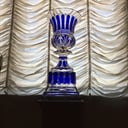What is the painting called that is shown below?
The painting that is shown in this instance is called the Nude Descending a Staircase, Marcel Duchamp, 1912, (cubist and/or futurist). At the time, when a new generation of artists first saw Duchamp's now famous painting, what did they say? Some art critics called it "Glitch Art." At that time, this type of art was defined as the point where an artist called the “unexpected” the result of a mistranslated idea or concept to produce unexpected results. This is art that is Glitch art created by a cubist or futurist.
Regarding Duchamp's Nude Descending a Staircase, a few art professionals working on all levels in the art world said that the painting was tasteful and had an air of humor and emotion about it. Yet, many more believed that it had caused an outrage in the art world. It was not viewed as glitch since it caused bad emotions and scandalous reactions.
But, those in support of Duchamp saw that he controlled all aspects of what he produced, and aside from some unexpected visual results, he roughly achieved the particular effect he wanted. The glitches that are in Duchamp's work are in an art context; they are really representations of aspects of glitches framed as art. For their sheer visual qualities, an art context is apparent.
Eadweard Muybridge in about 1890 took photographs as part of a series which are said to have inspired the 1912 painting called "Nude Descending a Staircase" by Marcel Duchamp (1887 - 1968). These photos are now also viewed as true art.
More Info:
www.galleryintell.com







